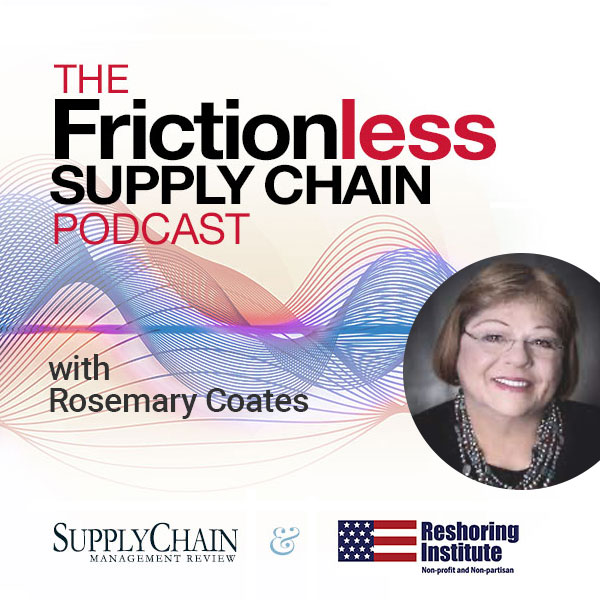A common challenge supplier quality leaders face is getting suppliers to implement improvements beyond those necessary to maintain compliance. According to participants in Gartner’s Supplier Quality Management Benchmark Survey, even if suppliers have the knowledge and ability to develop their quality capabilities, about one-third of organizations struggle to motivate suppliers to do so.
While many leaders lean on financial benefits to incentivize suppliers to improve their quality capabilities, these can be difficult to sustain and even ineffective as suppliers may not perceive cost-sharing arrangements as sufficiently attractive. Moreover, it does not address the root causes of concern among suppliers which makes them hesitant to improve. Specifically, those having to do with the resources they must devote and the potential negative impact on their own business.
Beyond financial motivators, there are other ways organizations can address supplier concerns about the heavy investment required and the associated impact of developing their capabilities. Here are four approaches to consider:
1.) Offer suppliers guidance to assist with improvement execution
Suppliers may be hesitant to improve their quality capabilities due to concerns about the amount of time and personnel they must devote to executing improvements. To address this concern, organizations can provide insights to suppliers based on their own experience implementing these or similar improvements.
For critical and strategic suppliers, take this approach a step further by offering hands-on support. This can include making your quality and engineering teams available to answer questions or demonstrate specific steps.
For example, take the case of a supplier who lacks a formal Gemba process and is unsure of how to develop and execute one. During their next on-site visit, the customer’s supplier quality professional could act out for the supplier what a Gemba walk looks like and highlight for them how to include a focus on quality issues. Alternatively, provide a lean specialist from the organization for a day to properly train the supplier in how to execute the process in their unique environment.
2.) Reduce overall auditing and reporting requirements for suppliers
Organizations can reward suppliers who exhibit sustained and consistent positive performance by reducing their broader efforts associated with being your supplier. These broader efforts pertain to the overall work and time suppliers must devote to meet auditing, reporting and testing requirements.
This can be carried out by allowing well-performing suppliers to conduct self-audits or by reducing the frequency with which you audit them and the depth of the assessments. Organizations can also lower the threshold for sample sizes as part of incoming inspections. This can be done by using statistical methods like acceptance sampling to determine sample sizes and acceptance criteria and by focusing testing on the most critical aspects of the product or service.
3.) Proactively mitigate potential negative impact on suppliers’ business operations
Financial factors are not the only thing suppliers consider when deciding if they should heed a customer’s request. Suppliers also think about how improving can impact their business — perhaps by opening them up to more risk or complicating their operations.
To help proactively minimize potential negative downstream impacts of improving on suppliers’ business operations, organizations should align with their critical/strategic suppliers to assess their “total cost of improving.”
This is achieved by factoring supplier capability and resources into your calculus (e.g., align with them early in the improvement process to ask if they have the necessary talent, tools and processes in place, or if they need to outsource/create new ones). Also, expand the time horizon used in your calculus (e.g., consider what this improvement/capability means for the supplier in three years, not just their immediate implementation costs).
Additionally, provide suppliers with solutions to overcome common challenges. For instance, by maintaining a list of common concerns/challenges associated with improvements/new capabilities and solutions or ways of mitigating them. This can be a combination of insights from your organization’s experiences and those raised/addressed by other suppliers. Use this list to have an open and honest conversation with your suppliers early in the improvement process about consequences they may encounter and jointly try to preempt them.
4.) Highlight value for suppliers’ other business
Beyond concerns about the capability improvement creating additional risk for their business, suppliers may feel that undertaking the improvement is not worth their investment - i.e., it will have no meaningful effect on their operations or their business with other customers.
This is a short-sighted view and can be overcome by sharing examples of how improving their quality capabilities can make them more competitive. Provide suppliers with access to benchmarking data and indicate how they can use it to make decisions about what areas to improve on.
For example, for your most critical/strategic suppliers, ask them about their specific strategic goals and try to align the requested capability improvement to those. This might be enabling them to expand their offerings to reach a new market or helping them obtain a certification that is aligned with upcoming regulations.
Prior to putting any of these approaches into practice, supplier quality leaders should meet with their teams to determine which specific incentive or set of incentives to implement from the four outlined. Unlike financial incentives, these approaches are largely within the control of supplier quality leaders, though some may require cross-functional collaboration with other internal teams involved in supplier management such as procurement and research & development.
About the author
Mónica Pellerano, principal research, is part of the Quality Management research team in Gartner’s Supply Chain Practice where she works with organizations to conduct in-depth research of their pressing challenges, surfacing evidenced best practices and practical tools practitioners can put to their own use.
SC
MR


Latest Supply Chain News
- Despite American political environment, global geopolitical risks may be easing
- Joseph Esteves named CEO of SGS Maine Pointe
- Employees, employers hold divergent views on upskilling the workforce
- April manufacturing output slides after growing in March
- Q1 sees a solid finish with positive U.S.-bound import growth, notes S&P Global Market Intelligence
- More News
Latest Podcast

 Explore
Explore
Topics
Business Management News
- Joseph Esteves named CEO of SGS Maine Pointe
- Employees, employers hold divergent views on upskilling the workforce
- April manufacturing output slides after growing in March
- Q1 sees a solid finish with positive U.S.-bound import growth, notes S&P Global Market Intelligence
- 6 Questions With … Sandeep Bhide
- MIT CTL offering humanitarian logistics course
- More Business Management
Latest Business Management Resources

Subscribe

Supply Chain Management Review delivers the best industry content.

Editors’ Picks





